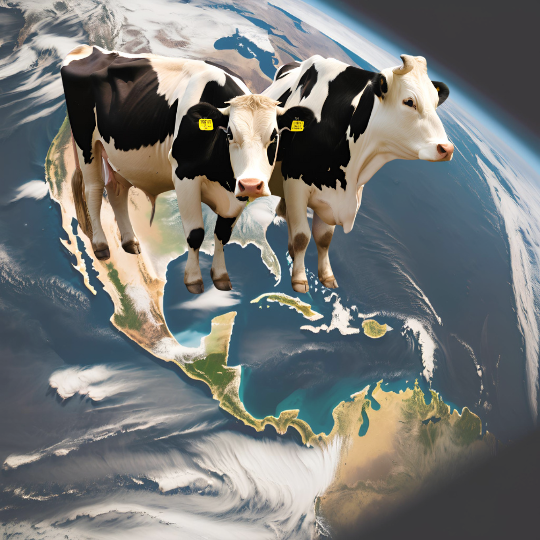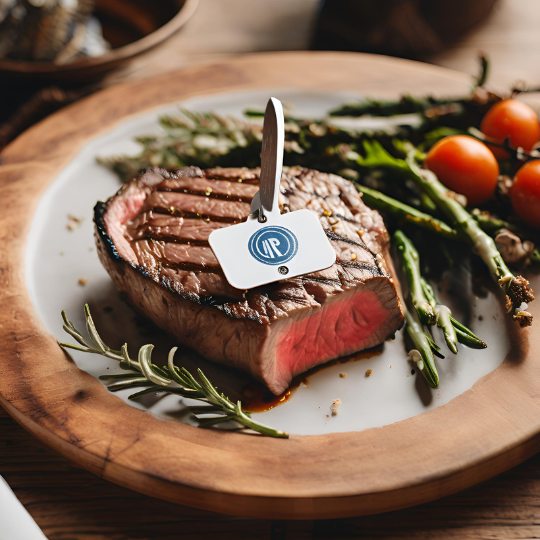What’s Driving Beef Trends in the U.S.? The U.S. beef industry is an American institution. I mean, what’s more American than grilling a juicy steak in the backyard, right? But while we’re over here trying to decide between medium-rare or well-done, the beef industry is facing its own version of an identity crisis. Consumers are changing beef trends faster than I can scroll through my social media feed. And producers? Well, they’re doing their best to keep up.
So, what’s the beef (pun fully intended) with U.S. beef trends? Buckle up, because we’re diving into sustainability, health fads, and why your steak might come with a side of environmental consciousness. Learn more about Basics of U.S. Beef Production: A Changing Industry.
Sustainability in Beef Production: Saving the Planet, One Steak at a Time
Sustainability has become the buzzword, and I’m not talking about those fancy metal straws everyone’s sipping their iced coffees through. No, the U.S. beef industry is making some serious moves to keep both cattle and the planet happy. It’s no longer just about juicy steaks! It’s about whether your steak comes with a smaller carbon footprint. Welcome to 2024, folks.
So, here’s what’s happening: regenerative agriculture is becoming the star of the show. Think of it as giving the land a well-deserved spa day. Rotational grazing lets cattle roam freely in one spot while giving other parts of the pasture a break. It’s kind of like a revolving buffet for cows, except they’re doing it to save the soil, prevent overgrazing, and keep the ecosystem in check. Win-win!
But let’s not stop at the pasture. Those methane-producing cows? Yeah, the ones who’ve been blamed for their, um, “contributions” to global warming? Well, the industry is coming up with ways to reduce methane emissions with some seriously cool feed additives. Because let’s face it, cattle are not built to consume high volumes of grain, which is their main diet in feedlots. Imagine giving cows a special diet that helps them burp less methane. I know, right? Who knew cow burps would be a topic of environmental importance?
The whole idea is to show consumers; and the planet, that beef can be both delicious and sustainable. It’s a tough balance, but the big beef producers in the industry are making strides. Plus, eco-conscious shoppers are more than happy to shell out a little extra for that “sustainably-raised” label. Hello, higher price tags.
Traceability: Who Knew Your Steak Needed a GPS?
Speaking of extra labels, have you ever stopped to wonder where your beef actually comes from? I mean, really? Turns out, a lot of people have. After that little mad cow disease fiasco back in 2003 (yeah, I know, a throwback to scarier times), the beef industry had to step up its game with traceability systems. Now, we’re talking about tracking each cut of beef from birth to your dinner plate. It’s like a GPS for cows. Welcome to the future.
Consumers don’t just want transparency. They demand it. You want to know if that ribeye on your plate had a good life, right? Beef producers have put systems in place so you can rest easy knowing exactly where your steak came from. From how it was raised to whether it meets the safety standards you didn’t even know you needed. Oh, and it’s not just us Americans who care. International markets are all about it, too. If your beef doesn’t come with a background check, you might not even get a foot in the door. Talk about high stakes (steaks, get it?).
Health Trends: The “No Antibiotics Ever” Beef Revolution
I don’t know about you, but these days, health trends feel like they come and go faster than I can say “kale smoothie.” And beef? Oh, it’s right in the middle of it all. Consumers are out here asking for antibiotic-free and organic beef like they’re ordering a latte at Starbucks: “Can I get a hormone-free, antibiotic-free, grass-fed beef burger with a side of moral superiority?”
In the past, big beef producers were all about antibiotics. It was kind of the norm; used to keep the cows from getting sick and help them grow faster. But now, thanks to a little thing called antibiotic resistance (cue the horror music), consumers are saying “No, thanks!” to the antibiotics. Producers are scrambling to find alternatives, like probiotics and plant-based supplements. So now, your steak could be the probiotic superstar your gut never knew it needed. Who knew, right?
Let’s not forget the rise of organic beef. If your steak isn’t raised on organic feed, free from pesticides, GMOs, and synthetic fertilizers it isn’t making the cut. Organic beef is pricey, but that hasn’t slowed down its meteoric rise. People are willing to pay a premium for a burger that’s good for both their bodies and the environment. I guess it’s like splurging on organic kale, but way tastier.
Challenges in the U.S. Beef Industry: The Not-So-Secret Struggles
Of course, not everything is filet mignon and fancy labels. The U.S. beef industry is still facing some big-time challenges, starting with market concentration. Did you know four companies control over 80% of beef processing in the U.S.? That’s right, just four! It’s like a VIP club, and if you’re a smaller producer trying to get in with niche products like grass-fed or organic beef, good luck. These big guys hold all the cards, which makes it tough for the little guys to shine. Read more about a rancher doing just that in my series about the Sustainable Beef Revolution!
And then there’s the elephant in the room. The environmental impact of beef production. Let’s be real: cows take up a lot of resources. It’s no secret that beef production requires massive amounts of water, feed, and land. Critics are quick to point out that we could use those resources more efficiently elsewhere. While producers are doing their best to adopt more sustainable practices, there’s still a long way to go. It’s kind of like running a marathon where the finish line keeps moving further away. But we need to also understand what decisions are made today affect the planet and our future generations.
Why the Beef Industry is Evolving: The Consumer is King (Or Queen!)
At the end of the day, the evolution of the U.S. beef industry all comes down to one thing: us. The consumers. Our preferences are driving the beef trends, and producers are hustling to keep up.
Consumer preferences are like the ultimate boss battle in the beef industry. People want grass-fed, organic, hormone-free, antibiotic-free, environmentally-friendly beef. And they want it now. But it’s not just what’s on the label that matters. People care how their beef is produced. If it doesn’t come with an eco-friendly backstory, well, they’re swiping left. Read more about the Impact of Branded Beef and how our choices are driving the big beef production industry.
On top of that, regulatory pressure is heating up. Environmental regulations are stricter than ever, which means producers are juggling new rules on water use, waste management, and emissions. If they don’t keep up, it’s game over.
Luckily, technology is swooping in to save the day. Precision agriculture, methane-reducing feed, and better cattle health monitoring are all making it easier for producers to stay ahead of the game while keeping costs down. The future of beef is all about innovation. Who knew cows would be the next tech trend?
The Future of U.S. Beef Trends: What’s Next?
So, where do we go from here? As consumer demand for sustainable, antibiotic-free, and organic beef continues to skyrocket, we’re going to see even more innovation in the industry. From futuristic feed additives to next-gen traceability systems, the U.S. beef industry is ready to evolve. It’s all about balancing flavor, health, and the environment in a way that keeps everyone; from the eco-conscious to the meat lovers, happy.
Get ready, folks. The future of beef is looking like a wild ride, and I, for one, am excited to see what’s cooking.
Stay in the Know!
Sign up for our FREE email list and be the first to hear about the latest trends, new finds, and hidden gems. We’re always discovering fresh insights, so don’t miss out!
Have questions or need more info? Reach out anytime through my Contact Us page—I’d love to hear from you!




